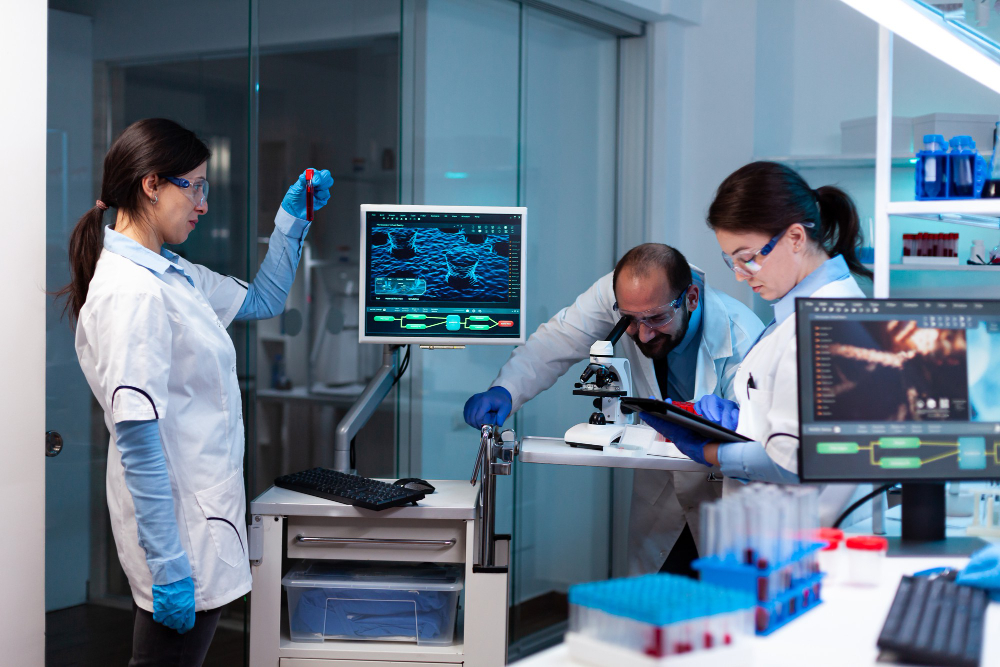실험 방법 번역(한국어 원본)본 실험에서는 크게 세 가지 부문으로 구성되어 있다. 첫번째는 a-IGZO TFT의 기본적인 전기적 특성을 알아 보기 위하여 스퍼터 증착 시 박막에 가장 큰 영향을 미치는 산소 분압 변화에 대한 전기적 특성 변화를 알아보았다. 두번째로 Forming gas(95%N2 + 5%H2) 분위기에서 열처리를 실시하여 전기적 특성을 개선한 부분과, 마지막 실험으로 Ultra violet(UV) light의 광 에너지를 이용하여 a-IGZO TFT의 전기적 특성 개선을 실험하였고, UV light 조사에 의한 IGZO 박막의 거동을 알아보았다.
3.1 a-IGZO 박막의 형성 및 분석 방법
3.1.1 a-IGZO 박막의 증착 및 조건
a-IGZO 박막들은 25 mm×25 mm 크기의 석영기판(fused quartz) 위에 In2O3, Ga2O3와 ZnO 분말을 혼합하여 소결해서 만든 타겟(ANP, Φ=3 inch, t=3 mm)을 사용하여 RF 마그네트론 스퍼터링 방법으로 증착하였다. 박막증착에 사용된 타겟의 specification은 Table 3-1과 같다.
(1) Oxygen partial pressure
박막의 형성은 공정온도 R.T.(20℃), working pressure 5 mTorr, power 40 W로 고정하여 증착하였고, 증착 시 a-IGZO의 전기적 특성에 가장 민감게 영향을 주는 반응기체 내 산소의 분압비 [O2/(Ar+O2)]를 0, 10, 20, 30%로 변화시키며 TFT의 전기적 특성을 측정하여 분석하였으며, forming gas annealing (40%)과 UV light irradiation (10%) 각각 후 처리에 가장 적합한 산소 분압비에서 실험을 진행하였다.
(2) Annealing
산소 분압비 [O2/(Ar+O2)] 40%에서 증착한 a-IGZO 박막은 N2와 forming gas (95%N2 + 5%H2) 분위기에서 annealing을 진행하였다. 열처리는 tube furnace에서 실시하였고 실제 tube funace의 온도와 내부온도의 차이를 확인하기 위하여 tube furnace 내부의 온도는 열전대(thermocouple)를 이용하여 측정하여 온도 조절을 하였다. Annealing은 상온에서 350℃까지 1시간에 걸쳐 승온 시킨 후 다시 1시간 동안 350℃에서 온도를 유지하며 annealing을 하였다.
(3) Ultra violet(UV) 조사 조건
UV light는 산소 분압비 [O2/(Ar+O2)] 10%에서 증착한 a-IGZO 박막을 사용하여 실험을 진행하였다. 광원으로 185, 254 nm 두 파장의 UV light를 사용하였으며 동시에 샘플에 조사하였다. Air 분위기에서 UV 처리를 실시하였으며, 샘플과 광원과의 거리는 1 cm 미만에서 실험하였다. Illumination power는 25 mW이며 실험에서 변수로 빛을 조사하지 않은 샘플과 30, 60, 120 min 동안 조사를 하였다.
3.1.2 a-IGZO 박막의 분석 방법
본 절에서는 반응 가스 내 산소 분압비와 RF power를 변화시키면서 증착시킨 a-IGZO 박막의 구조 분석과 화학적 조성, 광학 및 전기적 특성을 분석하기 위해서 사용한 방법들을 간략히 설명하고자 한다.
(1) 박막의 구조적 분석
스퍼터링 방법의 산소 분압 별로 성장시킨 박막의 두께를 알파스텝(Tencor, Alpha-step 500 Profiler)을 이용하여 측정하였고, 두께와 증착에 소요된 시간으로부터 각각의 증착속도를 계산하였다.
석영기판 위에 증착시킨 박막들의 상(phase)을 확인하기 위하여 X-ray diffraction(XRD: Rigaku, D/MAX-2500/PC, Cu-Kα radiation = 1.5418 Å, scan angle 10°< 2θ <90°) 방법을 이용하여 분석하였다. XRD 결과 증착된 박막이 LRO를 가진 결정질이라면 Bragg의 회절법칙에 따라 (d: atomic spacing, θ: diffraction angle, λ: wavelength)를 만족하는 날카로운 peak를 나타내게 된다 [1]. 또한 조건별로 성막시킨 IGZO 박막 상변화를 관찰하였다. |
실험 방법 번역(영어 번역본)This experiment is divided into three parts. First, to understand the basic electrical characteristics of a-IGZO TFT, the change in electrical characteristics due to change in oxygen partial pressure, which has the strongest influence on thin film during sputter deposition, was studied. Second, thermal process was carried out in forming gas (95%N2 + 5%H2) to improve electrical characteristics. Finally, optical energy of UV light was used to improve the electrical characteristics of a-IGZO TFT and the behavior of IGZO thin film upon UV light irradiation was examined.
3.1 Formation of a-IGZO thin film and analysis method
3.1.1 a-IGZO thin film deposition and conditions
a-IGZO thin films were deposited by RF magnetron sputtering method using target (ANP, Φ=3 inch, t=3 mm) that was created by mixing In2O3, Ga2O3, and ZnO powders on a 25 mm×25 mm fused quarts substrate. Specification of the target used for thin film deposition is shown in Table 3-1.
(1) Oxygen partial pressure
Thin film was formed by deposition at RT (20℃), 5 mTorr working pressure, and 40 W power. During the deposition, partial pressure ratio of oxygen in the reactant gas, which influences the electrical characteristics of a-IGZO most sensitively, was set at 0, 10, 20, 30% and the electrical characteristics of TFT was measured and analyzed. Then a-IGZO thin film was processed through gas annealing (40%) and UV light irradiation (10%), each at an oxygen partial pressure ratio optimal for the respective post-processes.
(2) Annealing
a-IGZO thin film deposited at 40% oxygen partial pressure ratio [O2/(Ar+O2)] was annealed in N2 and forming gas (95%N2 + 5%H2). Thermal processing was done in tube furnace, and thermocouple was used to measure temperature inside the tube furnace in order to check the temperature difference between the actual tube furnace temperature and the internal temperature. Furnace was heated from room temperature to 350℃ for 1 hour, and then thin film was annealed at 350℃ for 1 hour.
(3) Condition for Ultraviolet (UV) irradiation
UV light experiment was carried out using a-IGZO thin film deposited at 10% oxygen partial pressure ratio [O2/(Ar+O2)]. UV lights with two wavelengths (185, 254 nm) were used as light sources and they were irradiated onto the sample at the same time. UV treatment was done in air, and the distance between the sample and the light source was less than 1 cm. Illumination power was 25 mW, and the samples were irradiated for 0, 30, 60, or 120 min.
3.1.2 Method for a-IGZO thin film analysis
In this section, methods used for the analysis of structure, chemical composition, optical properties, and electrical characteristics of a-IGZO thin film, which was deposited by varying the partial pressure ratio of oxygen in reactant gas and the RF power, will be explained.
(1) Structural analysis of thin film
Thickness of thin film grown for each oxygen partial pressure of the sputtering method was measured using Alpha-step 500 Profiler (Tencor). From the thickness and the time spent for deposition, deposition rate for each sample was calculated.
X-ray diffraction (XRD: Rigaku, D/MAX-2500/PC, Cu-Kα radiation = 1.5418 Å, scan angle 10°< 2θ <90°) was used to analyze the phase of thin films deposited on fused quartz substrate. XRD results showed that if the deposited thin film is a crystal with LRO, it shows a sharp peak that satisfies the Bragg’s law of diffraction, which is (d: atomic spacing, θ: diffraction angle, λ: wavelength) [1]. Also, phase change of IGZO thin film that has been deposited for each condition was examined. |
